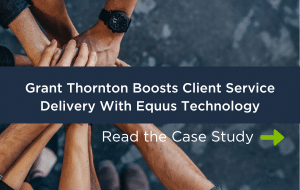Promoting DE&I Across Your Business: Take a Close Look at Your Global Mobility Management Policies
Sanctions, the fallout of the COVID-19 pandemic, supply chain disruptions, inflation, labour cost and de-globalization are just some of the pressures international businesses are experiencing right now. To respond appropriately, it’s more important than ever to have the right people in the right places, at the right time.
But encouraging talented people with the appropriate skills and experience to put themselves forward for international assignments can be a challenge. Corporate culture can unconsciously mirror societal trends and exclude employees from minority groups, groups that have experienced historical discrimination or individuals and families that don’t fit an assumed ‘norm’.
It’s the job of global mobility teams – in concert with stakeholders across organizations – to provide equality of opportunity when examining candidates to undertake assignments and business travel. Doing so, leads to a host of benefits, including higher levels of talent retention, increased business agility and greater competitive advantage.

I’ve written in the past about how global mobility solutions can contribute to diversity, equity and inclusion (DE&I) efforts at your organization. Here, we go into greater detail about one way that GM teams can strive for greater inclusivity in your program: corporate policy ‘best practices’.
Update Your Language

Your global mobility policies should be encouraging and welcoming to all, and written in open, simple language. For instance, does your mobility policy use “spouse” when talking about an employee’s partner who may or may not be accompanying them on an assignment? If it does, the policy could make certain individuals in your workforce feel excluded.
Language is an easy thing to fix, but reviewing policies objectively is not straightforward. Mobility professionals, like everyone, have internal (typically unconscious) biases that stem from their background and life experiences.
A way around this is to include stakeholders from under-represented groups, such as people with disabilities, from different ethnic backgrounds or from LGBTQIA+ communities, in the process. They’ll surely pick up things that others may not. Ask them, “Do you see yourself in this policy?” If not, find out why and make appropriate adjustments.
Review Benefits and Allowances
Another simple factor that can greatly inhibit inclusivity in GM policies concerns the benefit or allowance framework. Many organizations still tend towards a one-size-fits all approach here. If yours does, the policies are out-of-date.
For example, the spousal allowance connected to an international assignment typically provides a set amount of money for a spouse to pursue education or training that will help them in the new location. If you’re a single parent or unmarried, you wouldn’t qualify for that.
Taking a more open, flexible approach that gives employees choice over their benefits can bring more diverse talent into the potential assignee population. Instead of a spousal allowance, for instance, offer funds that assignees can choose to use for a wide range of services, including training, education or childcare for any dependents or family members. This means single parents and employees from non-traditional families will feel more valued and more likely to put themselves forward for assignments and travel. It’s also more inclusive and supportive of what modern families look like.

Core Flex policies can structure packages so that critical ‘duty of care’ components such as tax, immigration services and medical insurance are non-negotiable, but at the same time offer flexible policy
options that enable the business to better meet the personal and diverse needs of their mobile employee populations. Better still, Employee Benefits can easily be structured to provide a wide range of benefits or cash equivalent allowances, so that the employee or their partner has discretion on their choices and feels fully engaged with the process.
Whether a candidate needs support with learning a language, managing cultural difference in a new location, or finding specialist education for a child with learning disabilities, the aim is to accommodate the employee as an individual. And doing so means they’re more likely to have a successful assignment.
Re-examining language and providing flexible benefits are two clear ways in which mobility teams can adjust policies to help advance an organization’s DE&I efforts. The challenge is typically not one of complexity or investment – mobility technology solutions can easily handle policy options, choices and instruct these for payroll delivery and compliance reporting – but more one of doing things differently. Only when we remove the unconscious biases that lurk within corporate communities and cultures can we fully embark on a more diverse and inclusive future.
The results for the business will be having confidence that the best person is being posted to the right place at the right time. At this time of change and challenge, this has never been more important. In many ways, it’s what global talent mobility is all about.
Discover how global mobility teams can boost DE&I at your organization with global mobility technology. Click here to read part 1 of this blog series.













